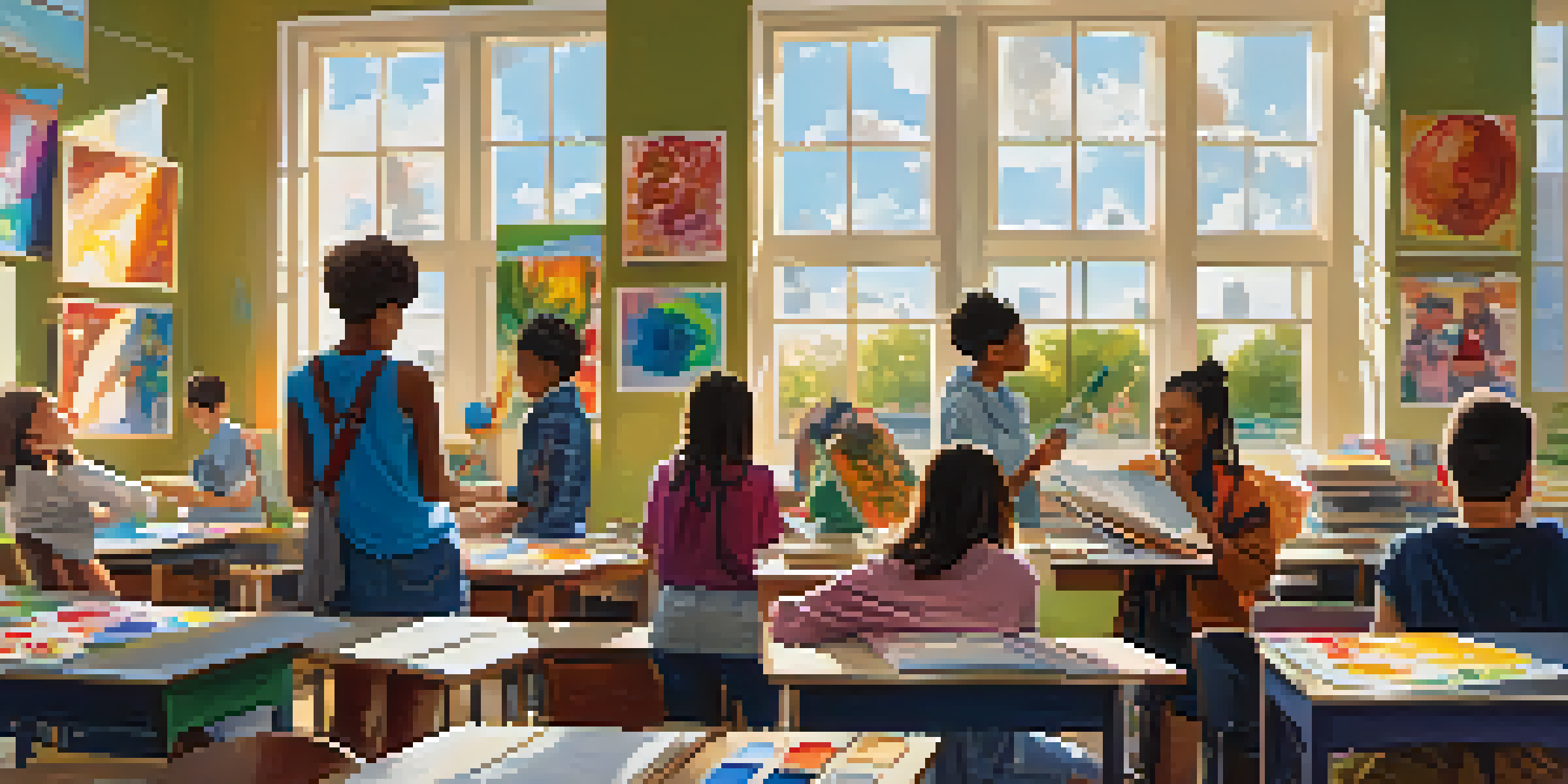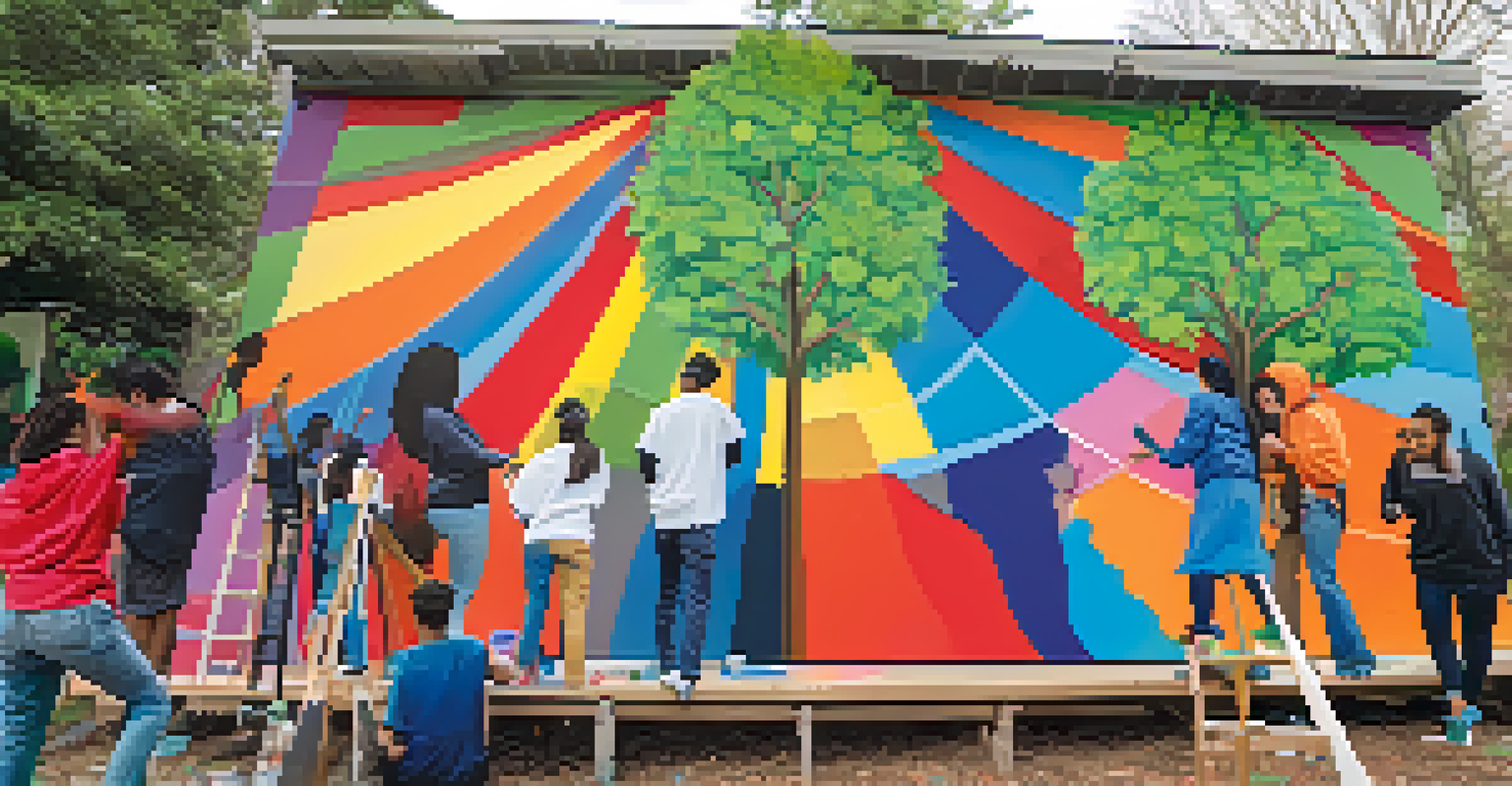Innovative Arts Education Initiatives in Buffalo Schools

The Importance of Arts Education in Buffalo Schools
Arts education plays a vital role in fostering creativity and critical thinking in students. In Buffalo, schools are increasingly recognizing the need to incorporate arts into their curricula, not just as an extracurricular activity but as a core component of education. This shift aims to prepare students for a diverse range of future opportunities, blending artistic skills with academic knowledge.
Every artist was first an amateur.
By encouraging students to engage in the arts, Buffalo schools help nurture emotional intelligence and self-expression. These skills are invaluable, as they enable students to articulate their thoughts and feelings more effectively. Moreover, research shows that students involved in arts education often perform better academically across other subjects, creating a well-rounded educational experience.
Buffalo's commitment to arts education reflects a broader understanding of the importance of cultural literacy. As students are exposed to various forms of artistic expression, they gain a deeper appreciation for diversity and community. This approach not only enriches their education but also cultivates a sense of belonging within the school environment.
Community Partnerships Enhancing Arts Programs
One of the most exciting developments in Buffalo's arts education is the collaboration between schools and local arts organizations. These partnerships provide students with access to resources, mentorship, and real-world experience in the arts. By working alongside professional artists and educators, students can explore their creative potential in a supportive environment.

For example, programs like the Buffalo Arts Studio and the Albright-Knox Art Gallery have opened their doors to students, offering workshops and hands-on projects. These initiatives not only enhance the arts curriculum but also help students build connections within the local arts community. Such collaborations foster a sense of pride and ownership over their artistic endeavors.
Arts Education Boosts Student Growth
In Buffalo, integrating arts into the curriculum enhances creativity, emotional intelligence, and academic performance.
Moreover, these community partnerships often extend beyond the classroom, allowing students to showcase their work at local exhibitions and events. This visibility can be a powerful motivator, inspiring students to pursue their passions further. By integrating arts education with community engagement, Buffalo schools are creating a vibrant ecosystem that supports young artists.
Integrating Technology in Arts Education
As technology continues to evolve, Buffalo schools are embracing innovative tools to enhance arts education. From digital art software to virtual reality experiences, technology offers students new ways to express their creativity. This integration not only makes learning more engaging but also prepares students for careers in an increasingly digital world.
Art is not freedom from discipline, but disciplined freedom.
For instance, students can use graphic design programs to create stunning visual art or animation, blending technology with traditional artistic skills. Additionally, virtual platforms allow for collaborations with artists and educators from around the globe, broadening students’ perspectives and experiences. This tech-savvy approach helps foster a more dynamic learning environment.
Furthermore, the use of technology in arts education can help bridge gaps for students who may struggle with traditional methods. By providing alternative forms of expression, all students can find their unique voice. In Buffalo, educators are finding that when technology and art intersect, the results can be transformative.
Emphasizing Cultural Heritage in Arts Programs
Buffalo's diverse cultural landscape provides a rich backdrop for arts education, and schools are harnessing this heritage in their programs. By incorporating elements from various cultures, students gain a broader understanding of the world around them. This focus on cultural heritage not only enriches students’ artistic experiences but also promotes inclusivity and respect.
For example, schools might offer programs that explore local Indigenous art forms or celebrate the city's vibrant immigrant communities through music and dance. These initiatives allow students to connect with their own backgrounds while learning about others. Such exposure fosters empathy and appreciation for different perspectives.
Community Partnerships Enrich Programs
Collaborations between schools and local arts organizations provide students with mentorship and real-world experiences.
Incorporating cultural heritage into arts education helps students see the value of their own identities. This empowerment can inspire young artists to create work that reflects their experiences and tells their stories. Ultimately, Buffalo schools are committed to creating an arts education landscape that honors diversity and encourages personal expression.
Student-Led Initiatives in the Arts
Empowering students is a crucial aspect of innovative arts education in Buffalo schools. Many schools are encouraging students to take the lead in arts initiatives, allowing them to explore their interests and develop leadership skills. These student-led projects can range from organizing art shows to creating community murals, fostering a sense of ownership and pride.
For instance, a group of students might collaborate with local artists to design a mural that reflects their school’s values or history. Such projects not only beautify the school environment but also serve as a means of self-expression for the students involved. This hands-on experience provides valuable lessons in teamwork and project management.
Furthermore, student-led initiatives can help build a supportive community within the school. When students are given the freedom to express themselves creatively, they often inspire their peers to do the same. This positive reinforcement creates an environment where the arts thrive and students feel encouraged to share their talents.
Challenges and Solutions in Arts Education
While Buffalo schools are making strides in arts education, challenges remain. Budget constraints and standardized testing pressures can sometimes limit the resources available for arts programs. However, educators and administrators are finding creative solutions to ensure that arts education continues to flourish despite these obstacles.
One effective strategy is to seek grants and funding from local businesses and arts organizations. These partnerships can provide much-needed resources to support arts initiatives. Additionally, schools are embracing community engagement to help raise awareness and funds for their programs, creating a collective effort to prioritize arts education.
Cultural Heritage Shapes Learning
Incorporating diverse cultural elements in arts education fosters inclusivity and allows students to express their identities.
Moreover, advocacy for arts education is gaining traction in Buffalo, with parents and community members rallying to support programs. This grassroots movement is vital for ensuring that arts education remains a priority. By addressing challenges head-on, Buffalo schools are committed to creating a sustainable future for arts education.
The Future of Arts Education in Buffalo Schools
Looking ahead, the future of arts education in Buffalo schools appears promising. As more educators recognize the benefits of integrating the arts into their curricula, innovative initiatives are likely to continue evolving. The commitment to fostering creativity and critical thinking skills in students will remain a cornerstone of education in the city.
Emerging trends, such as interdisciplinary programs that combine arts with science, technology, engineering, and math (often referred to as STEAM), are already gaining traction. These initiatives not only enhance learning but also prepare students for a rapidly changing job market. By blending the arts with traditional subjects, Buffalo schools are paving the way for a more holistic education.

Ultimately, the goal is to create an educational environment where every student feels inspired to explore their creativity. Through ongoing support, collaboration, and innovation, Buffalo schools are poised to cultivate the next generation of artists and thinkers. The commitment to arts education will undoubtedly continue to shape the future of the community.